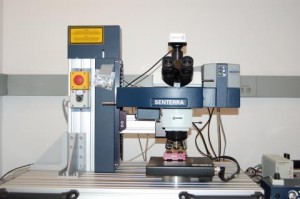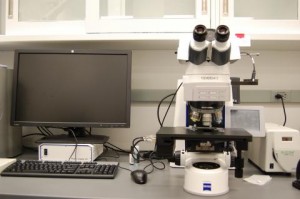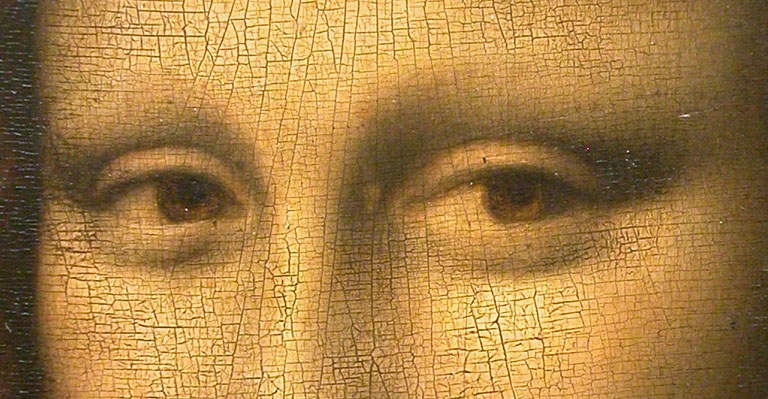As long as there have been artists, there have been forgers. In the modern day, proving that a work of art is a forgery has high stakes; in 2012, Knoedler & Co., once New York’s oldest art gallery, sued for twenty-five million dollars over the sale of a fake Rothko painting—a forgery of twentieth-century abstract art. Because forgery is an art in and of itself, experts may not be able to conclusively prove that a piece is a fake based only on visual examination. Enter the scientist. Using modern-day techniques, including instrumental analysis and imaging, scientists and conservators can do their own detective work in the art world.
Time and Technology
One of the things scientists evaluate when authenticating a painting is whether its material composition matches what is known to have been available and used during the time period in which it was supposed to have been created. This verification is often made by chemically analyzing pigments and the binding medium of the paint.

“You know the [artist] had some choices in terms of what materials they used, and how they combined them,” said Aniko Bezur, conservation scientist and director of scientific research for the Technical Studies Lab at the Yale Institute for the Preservation of Cultural Heritage. With this information, scientists can determine the likelihood that the particular material was available to the artist in that time period. They also can gauge whether the chemical composition of a painting is consistent with that of other known paintings by the artist in question. Anachronisms can indicate that a piece of art has been forged.
The equipment that conservation scientists use to analyze art would be just as applicable to the work of cell biologists or chemists. Standard equipment used to analyze materials in artwork range from electron scanning microscopes to gas chromatography coupled with mass spectroscopy. The former technology produces images of the surface of microscopic samples with a focused beam of electrons and can map the distribution of elements present, while the latter is used to study organic components of objects.
While radiography is routinely used at Yale’s conservation laboratories to visualize an object’s internal structure, more specialized procedures, such as CT scanning, which generates views of an object’s cross sections, are performed by specialists elsewhere, Bezur said. Both techniques provide information about objects that may not be visible on the surface: the presence of fractures, the relative density of components or the use of different types of fasteners.
Art Theory
The authenticity of an object is impossible to prove, said Bezur, since scientists and experts alike cannot definitively determine that an artist did create a work; it is only possible to disprove its supposed origins or to strengthen the case for its authenticity.
In addition to directly analyzing a work’s composition, art conservators and art historians may evaluate stylistic details such as brushstroke patterns and subject matter. These clues can be useful for determining the period in which a work of art was created.
“Sometimes it’s not so much [about] finding fakes, it’s just trying to precisely date something to find out exactly what it is,” said Ian McClure, chief art conservator at Yale University Art Gallery. For example, McClure’s lab is currently studying a piece of textile that could be from either the early third century or the nineteenth century. Should scientists detect the presence of a material such as an aniline dye in the weaving, they could tentatively conclude that the fabric has more modern origins.

Another mode of supporting claims of authenticity is to trace an object’s provenance—the paper trail of photographs, transaction receipts, exhibition records, or other documentation that strengthens the legitimacy of an artwork. Provenance can act as a historical certification of sorts, allaying fears that a forger, contemporary with the apparent artist, might have faked the artwork.
Unfortunately, even provenance can be faked. Just as an object can be warped to create the appearance of age—legend has it that Yale’s own Harkness Tower was artificially aged with acid—there also are methods to fake the documentation of a painting’s history. In 2011, for instance, a case of 20th-century artworks forged by the artist Wolfgang Beltracchi made international headlines. Bezur said that investigators of that case uncovered falsified black-and-white photographs from the 1940s, depicting some of the paintings in a private collection, had been used to bolster the work’s legitimacy.
Why Authenticity Matters
As ever-more-elaborate forgeries are created, more advanced forms of technology will be used to detect them, McClure said, a cycle that may persist as long as there are artists to be mimicked. Though experts may strive to rid the art world of forgeries, McClure noted that a piece could still have value, even after it is determined to be a fake.
“The … interesting thing about forgeries is that [they] often are convincing at the time they are produced,” McClure said. “Basically, we all have a particular kind of style which is associated with the period, and if the forger taps into that, it is very hard for us to see anything amiss.” Studying examples of known fakes, such as Han Van Meegeren’s forgeries of the seventeenth-century Dutch master Vermeer, can help scholars understand the style of the era. In addition to serving as real-world examples for students learning how to detect forgeries, they also can shed light on why the fakes were accepted as genuine at the time they were painted. In such a way, forgeries can become objects of interest in their own right.
On a more philosophical note, the science of detecting art forgeries speaks to a fundamental desire to understand, as fully as possible, exactly where and how something originated. Differentiating between what is genuine and what is counterfeit can help people better understand what makes a work or an artistic style so special. This idea may help explain why we care that artwork has been authenticated.
“When you see [that an object is] a forgery and you look at it again, a lot of … the beauty begins to fall apart,” McClure said. By proving particular works to be counterfeits, however, science is helping to shine the spotlight on what is real, rather than a deception.

